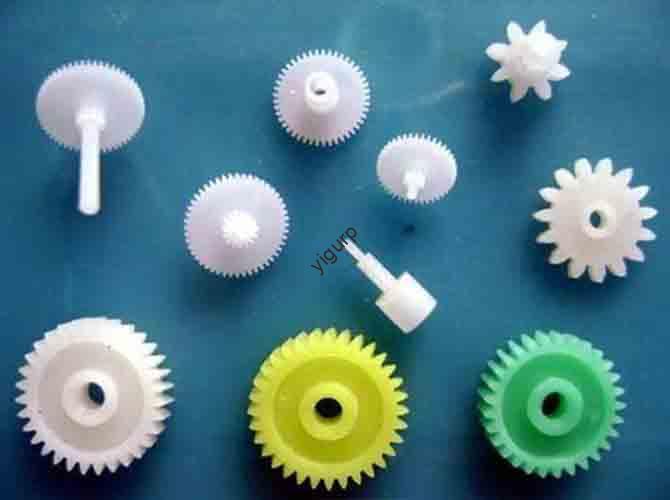Nel mondo manifatturiero frenetico di oggi, businesses and engineers constantly seek technologies that cut costs, boost flexibility, and enable innovation. One solution that has risen to prominence? 3D additive printing (Chiamato anche 3D Printing or additive manufacturing, SONO). But what exactly is it, come funziona, and can it solve your production challenges? Questa guida rompe tutto ciò che devi sapere.
1. What Is 3D Additive Printing? Definizione & Principi principali
Al suo cuore, 3D additive printing is a digital manufacturing process that builds three-dimensional objects by adding material layer by layer—unlike traditional “subtractive” methods (PER ESEMPIO., MACCHING CNC) that carve or cut material from a solid block.
Key Principles of 3D Additive Printing
- Digitized Foundation: It starts with a 3D model created using CAD (Design assistito da computer) or CAM (Produzione assistita da computer) software. This file acts as a “blueprint” for every layer.
- Costruzione a strato per strato: The printer reads the CAD file, splits it into thousands of thin 2D layers, and deposits or fuses material (PER ESEMPIO., plastica, metallo, resina) one layer at a time—stacking them vertically to form the final object.
- No Molds Required: A differenza dello stampaggio o della fusione di iniezione, there’s no need for expensive, time-consuming molds—making it ideal for rapid prototyping and small-batch runs.
2. 3D Additive Printing Technologies: Tipi & Le loro applicazioni
Not all 3D printing technologies are the same. They vary by energy source, materiale, and molding method. Below is a breakdown of the most common types and where they excel:
| Nome tecnologico | Energy Source | Materiali comuni | Applicazioni chiave | Vantaggi |
| Stereolitmicromografia (SLA) | Laser UV | Resina fotopolimero | Prototipi, modelli dentali, gioielli | Dettagli elevati (0.1mm accuracy), superfici lisce |
| Filting laser selettivo (SLM) | Fiber Laser | Polveri metallici (acciaio, alluminio) | Parti aerospaziali, Impianti medici | Forte, durable metal components |
| Filting del raggio di elettrone (EBM) | Electron Beam | Titanio, cobalt-chrome | Impianti ortopedici, Strutture aerospaziali | High-temperature processing, rifiuti minimi |
Casi d'uso nel mondo reale
- Aerospaziale: Boeing uses SLM to print lightweight turbine parts, reducing fuel consumption by 15%.
- Medico: Hospitals create custom 3D-printed prosthetics (PER ESEMPIO., hand implants) that fit patients perfectly—cutting wait times from months to weeks.
- Automobile: Tesla uses 3D printing to prototype battery housings, slashing development time by 40%.
3. Vantaggi vs. Sfide: Can 3D Additive Printing Solve Your Problems?
To decide if 3D additive printing is right for you, let’s weigh its strengths against its current limitations:
Vantaggi (How It Solves Key Pain Points)
- Complexity Without Extra Cost: Print intricate designs (PER ESEMPIO., Strutture reticolari, canali interni) that are impossible with subtractive methods—no additional labor or tools needed.
- Utilizzo ad alto materiale: Fino a 95% of material is used (contro. 50-70% in CNC machining), Ridurre gli sprechi e abbassare i costi dei materiali.
- Personalization at Scale: Create custom products (PER ESEMPIO., dispositivi medici personalizzati, branded promotional items) without slowing down production.
- Prototipazione rapida: Turn a CAD design into a physical prototype in hours (Non settimane), accelerare i cicli di sviluppo del prodotto.
Sfide (What to Consider)
- Velocità di stampa: Large or thick parts can take hours or days to print—still slower than mass-production methods like injection molding.
- Limitazioni materiali: Alcuni materiali (PER ESEMPIO., Plastiche ad alta temperatura, certain metals) are expensive or lack the strength needed for heavy-industry use.
- Cost-Benefit Balance: Per la produzione ad alto volume (10,000+ unità), traditional methods are still cheaper. 3D printing shines most for small batches or prototypes.
4. Tendenze future: Where Is 3D Additive Printing Headed?
Man mano che la tecnologia avanza, these challenges are being addressed. Here’s what to expect in the next 3-5 anni:
- Faster Printing: Nuove tecnologie (PER ESEMPIO., Binder gettatura) are doubling print speeds, making 3D printing viable for more mid-volume applications.
- Wider Material Range: Companies are developing affordable, high-performance materials—including recycled plastics and bio-based resins.
- Finer Accuracy: Printers with 0.05mm resolution will become more accessible, opening doors for micro-manufacturing (PER ESEMPIO., tiny medical sensors).
- Cross-Industry Expansion: Expect growth in fields like construction (3D-printed homes) and food (custom-shaped snacks or nutrient-specific meals).
5. Yigu Technology’s Perspective on 3D Additive Printing
Alla tecnologia Yigu, vediamo 3D additive printing Come pietra angolare della produzione intelligente. It aligns with our mission to help clients reduce waste, speed up innovation, and adapt to changing market demands. We’ve supported aerospace and medical clients in adopting SLM and SLA technologies—for example, helping a dental lab cut prosthetic production time by 50%. While challenges like speed remain, we’re investing in software integrations (PER ESEMPIO., CAD-to-printer workflow tools) to make 3D printing more efficient. For businesses ready to move beyond traditional manufacturing, 3D additive printing isn’t just a trend—it’s a strategic tool.
Domande frequenti: Your Top 3D Additive Printing Questions Answered
- Q: Is 3D additive printing suitable for mass production?
UN: Attualmente, no—for batches of 10,000+ unità, metodi tradizionali (PER ESEMPIO., stampaggio a iniezione) are cheaper and faster. But it’s ideal for small batches (1-1,000 unità) and personalized products.
- Q: What materials can I use for 3D additive printing?
UN: Common options include plastics (Pla, Addominali), metalli (alluminio, titanio), resine, and even specialty materials like carbon fiber or ceramic. The choice depends on your application (PER ESEMPIO., Resina per i dettagli, metal for strength).
- Q: How much does a 3D additive printer cost?
UN: Entry-level desktop printers start at \(200-\)500 (for hobbyists), while industrial-grade printers (PER ESEMPIO., SLM per metallo) vanno da \(50,000 A \)1 milione. The cost also includes materials and software.
